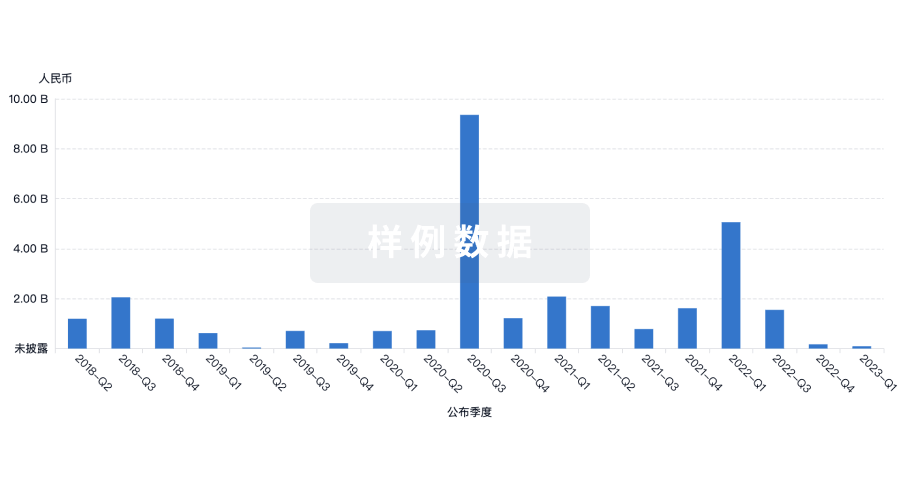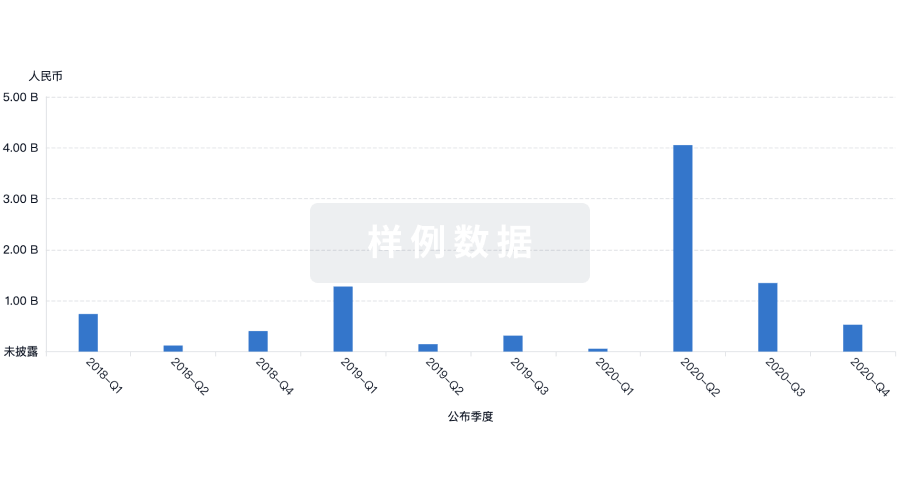预约演示
更新于:2025-07-16

Florida State University
更新于:2025-07-16
概览
标签
神经系统疾病
其他疾病
免疫系统疾病
小分子化药
疾病领域得分
一眼洞穿机构专注的疾病领域
暂无数据
技术平台
公司药物应用最多的技术
暂无数据
靶点
公司最常开发的靶点
暂无数据
| 排名前五的药物类型 | 数量 |
|---|---|
| 小分子化药 | 1 |
| 排名前五的靶点 | 数量 |
|---|---|
| GABA receptor(γ-氨基丁酸受体) | 1 |
关联
1
项与 Florida State University 相关的药物作用机制 GABA receptor激动剂 |
原研机构- |
在研适应症 |
非在研适应症- |
最高研发阶段临床阶段不明 |
首次获批国家/地区- |
首次获批日期- |
244
项与 Florida State University 相关的临床试验NCT06713473
Reducing Self-Dehumanization to Examine the Effects on Oxytocin and Suicide Risk
The goal of this experiment is to further determine if self-dehumanization is a novel risk factor for suicide. This study will reduce self-dehumanization using a novel re-humanization condition and compare this group to a control group to analyze the pathway between higher perceptions of self-dehumanization, suicidal ideation, and changes in oxytocin concentrations.
It is hypothesized that participants randomly assigned to the re-humanized condition will exhibit decreases in suicidal ideation and increases in oxytocin concentrations as compared to the control condition, which will not display significant changes. Further, we will explore if the magnitude of the oxytocin response will partially mediate the change in suicidal ideation.
It is hypothesized that participants randomly assigned to the re-humanized condition will exhibit decreases in suicidal ideation and increases in oxytocin concentrations as compared to the control condition, which will not display significant changes. Further, we will explore if the magnitude of the oxytocin response will partially mediate the change in suicidal ideation.
开始日期2026-08-01 |
申办/合作机构 |
NCT06127914
A Multiphase Project to Improve Use of Responsive Feeding Among Vulnerable Mother-Infant Dyads
The goal of this clinical trial is to learn more about responsive infant feeding (recognizing baby's signs of hunger and fullness) in mothers and infant enrolled in government-funded maternal-child home visiting programs. The main questions it aims to answer are:
* What are the contributors and barriers to use of responsive infant feeding?
* How can we refine an intervention focused on responsive infant feeding (the Learning Early Infant Feeding Cues intervention) so that mothers will like it and learn skills to help their baby be healthy.
* Will the refined intervention improve use of responsive feeding and be feasible and acceptable to mothers and home visiting programs?
Participants will be asked to:
* Participate in focus groups to talk about their experiences feeding their baby.
* Participate in a study to learn about responsive feeding and how to use it with their baby. This study will start when mothers are in their final month of pregnancy and finish when their baby is 6 months old. Participation will include:
* Having someone come to the family home during a time when the baby is eating (either from the breast or the bottle). The mother will receive information on the baby's signs from an experienced coach.
* Agreeing to be video recording during the session when the baby is eating.
* Completing surveys online.
* What are the contributors and barriers to use of responsive infant feeding?
* How can we refine an intervention focused on responsive infant feeding (the Learning Early Infant Feeding Cues intervention) so that mothers will like it and learn skills to help their baby be healthy.
* Will the refined intervention improve use of responsive feeding and be feasible and acceptable to mothers and home visiting programs?
Participants will be asked to:
* Participate in focus groups to talk about their experiences feeding their baby.
* Participate in a study to learn about responsive feeding and how to use it with their baby. This study will start when mothers are in their final month of pregnancy and finish when their baby is 6 months old. Participation will include:
* Having someone come to the family home during a time when the baby is eating (either from the breast or the bottle). The mother will receive information on the baby's signs from an experienced coach.
* Agreeing to be video recording during the session when the baby is eating.
* Completing surveys online.
开始日期2026-01-01 |
申办/合作机构 |
NCT06350682
Resilient HIV Implementation Science With SGM Youths Using Evidence
The Resilient HIV Implementation Science with SGM Youths using Evidence (RISE) Clinical Research Center will use a Type 2 hybrid-effectiveness-implementation study to evaluate the effectiveness and implementation of HMP, a youth-tailored digital health platform. It is hypothesized that SGM youths in the HMP intervention group will demonstrate improved PrEP initiation and viral load suppression over 12 months compared to the delayed HMP group.
开始日期2025-09-01 |
申办/合作机构 |
100 项与 Florida State University 相关的临床结果
登录后查看更多信息
0 项与 Florida State University 相关的专利(医药)
登录后查看更多信息
32,409
项与 Florida State University 相关的文献(医药)2025-08-01·EDUCATIONAL AND PSYCHOLOGICAL MEASUREMENT
Exploring the Evidence to Interpret Differential Item Functioning via Response Process Data
Article
作者: Kuang, Huan ; Huggins-Manley, A. Corinne ; Li, Ziying ; Shin, Jinnie
Evaluating differential item functioning (DIF) in assessments plays an important role in achieving measurement fairness across different subgroups, such as gender and native language. However, relying solely on the item response scores among traditional DIF techniques poses challenges for researchers and practitioners in interpreting DIF. Recently, response process data, which carry valuable information about examinees’ response behaviors, offer an opportunity to further interpret DIF items by examining differences in response processes. This study aims to investigate the potential of response process data features in improving the interpretability of DIF items, with a focus on gender DIF using data from the Programme for International Assessment of Adult Competencies (PIAAC) 2012 computer-based numeracy assessment. We applied random forest and logistic regression with ridge regularization to investigate the association between process data features and DIF items, evaluating the important features to interpret DIF. In addition, we evaluated model performance across varying percentages of DIF items to reflect practical scenarios with different percentages of DIF items. The results demonstrate that the combination of timing features and action-sequence features is informative to reveal the response process differences between groups, thereby enhancing DIF item interpretability. Overall, this study introduces a feasible procedure to leverage response process data to understand and interpret DIF items, shedding light on potential reasons for the low agreement between DIF statistics and expert reviews and revealing potential irrelevant factors to enhance measurement equity.
2025-08-01·Journal of Racial and Ethnic Health Disparities
Examining the Etiology of Asian American Suicide in the United States
Article
作者: DiBenedetti, Cassie ; Zimmerman, Gregory M ; Fridel, Emma E
Abstract:
Research highlights racial and ethnic disparities in suicide, but Asian American suicide receives very little attention in the literature. This is the first comprehensive, large-scale, nationally representative study of completed suicide among Asian Americans in the United States. Descriptive and multilevel regression techniques compared the risk factors for completed suicide across 227,786 Asian American, White, African American, Hispanic, and American Indian suicide decedents from 2003 to 2019. Results indicated that Asian American suicide decedents were significantly less likely than their counterparts to have several risk factors for suicide. Asian Americans were less likely to be male, uneducated, and unmarried. Asian Americans were less likely to use alcohol and drugs, to have mental health problems, and to die by firearm, relative to other suicide methods. Asian Americans were less likely to have a history of prior suicide attempts, to have intimate partner problems, and to have criminal legal problems. Conversely, Asian Americans were more likely to reside in places with higher levels of concentrated disadvantage, residential instability, racial and ethnic heterogeneity, and population density. The results underscore the need for race-specific suicide prevention strategies that, for Asian Americans in particular, take into account cultural values and barriers to help-seeking behavior.
2025-08-01·JOURNAL OF INTERPERSONAL VIOLENCE
Violent Victimization in Emerging Adulthood and Its Longitudinal Impacts on Well-Being: A Study of Ever-Homeless Persons
Article
作者: Biro, Szilvia D. ; Turanovic, Jillian J.
Persons who have experienced homelessness have higher lifetime risks of violent victimization relative to the general population. However, the long-term impacts of violent victimization on various facets of well-being are poorly understood among ever-homeless persons, particularly when violence is experienced in early adulthood. Here, using data from the National Longitudinal Study of Adolescent to Adult Health, we focus on a subsample of emerging adults who reported ever suffering homelessness (
N
= 481). Drawing primarily from Waves III and IV of the data, a series of regression models are specified to determine whether violent victimization in emerging adulthood is related to a range of negative outcomes later in life among ever-homeless persons (economic hardship, binge drinking, drug use, depression, offending, and victimization). Results indicate that victimization in emerging adulthood increases the risks for subsequent victimization for ever-homeless persons, but that it has no robust associations with any other outcomes examined. We explain these findings through processes of disadvantage saturation, in which the consequences of victimization may be more subdued among individuals who experience an array of hardships and disadvantages in their lives. The implications of these findings for policy are future research are discussed, and we emphasize the need for a context-contingent approach to the study of victimization and its life course consequences.
70
项与 Florida State University 相关的新闻(医药)2025-06-29
·化学经纬
引言近日,南科大李闯创团队在顶级综述性期刊Chemical Reviews 上发表了题为“Strategies and Lessons Learned from Total Synthesis of Taxol”的特邀综述性文章。首次系统总结了近三十年来紫杉醇的全合成进展,侧重从合成策略和经验教训方面进行陈述和点评,论文对紫杉醇从发现到成为明星抗癌药的传奇发现和全合成之旅进行了回顾,并展望了未来该领域的研究方向。紫杉醇研发历程关键时间节点图目前,紫杉醇(Taxol)是医药市场上最优秀的天然抗肿瘤药物之一,被认为是近20年内最有效的抗癌药物之一,同时也是全球销量第一的植物抗癌药。紫杉醇在临床上是用于乳腺癌、卵巢癌和部分头颈癌和肺癌的治疗的一线药物,其国际医药市场需求巨大。然而,紫杉醇的传奇发现之旅要从六十年前的一次不起眼的植物采集讲起。紫杉醇的发现1960年,美国国立癌症研究所(NCI)与美国农业部(USDA)成立了一个合作项目:由农业部负责向NCI提供植物样本用于抗癌药物的筛选。1962年8月,受雇于农业部的植物学家Barclay从华盛顿州收集了数公斤的短叶红豆杉(Taxus brevifolia)的树皮和枝叶,并将它们寄给了NCI。短叶红豆杉(图1),也称太平洋紫杉(Pacific yew),在自然条件下生长速度缓慢,再生能力差。从小树苗长成大树需要数百年,广泛分布在美洲、欧洲和亚洲,是经过了第四纪冰川遗留下来的活化石植物,在地球上已有250万年的历史,被称为植物中的“大熊猫”。图1. 短叶红豆杉又过了两年,红豆杉样品被送到了北卡罗来纳州三角研究所天然产物实验室的Wall博士及其团队核心成员Wani博士(图2)手中。随后的研究发现,树皮的提取物对人口腔表皮样癌细胞有细胞毒性。然而,直到1966年,他们只能确定该活性化合物含有一些羟基(英文通常用-ol后缀表示羟基)。根据这一特征,加之其来源的植物属(Taxus),他们将该活性分子称为紫杉醇(taxol),但紫杉醇的结构式此时仍是未解之谜。图2. Wall博士(左)和Wani博士(右)。图片来源:www.acs.org同年,Wall和Wani团队在分离和鉴定喜树碱的结构上取得成功,为抗癌药物喜树碱的研发奠定了坚实基础,NCI已经着手准备临床试验,一时间喜树碱的项目“看起来很热”。由于多数团队成员转去其它项目,紫杉醇的分离鉴定研究变得“无人问津”,Wall甚至劝告Wani“忘掉”短叶红豆杉。然而,Wani没有放弃,并坐了长达5年的“冷板凳”,在此期间,不断尝试将紫杉醇衍生化并期望获得单晶,进而鉴定结构。终于,在1971年,Wani成功得到了一个紫杉醇衍生物的单晶,并通过X射线衍射和核磁共振分析,完全确定了紫杉醇的结构!紫杉醇的结构紫杉醇的结构如图3所示。它具有一个独特的6-8-6-4四环骨架,含有高达11个立体手性中心,且高度氧化。它的三维立体结构看起来就像一个“倒扣起来的碗”。化学家们无不感叹,紫杉醇是一种只有自然界才能调制出的“怪物”。图3. 紫杉醇的结构。图片来源:Chem. Rev.紫杉醇的抗癌机制紫杉醇的结构一经发表,便引起了全球科学家的关注。但由于紫杉醇的来源稀缺且单一,Wani博士从13千克干树皮样中只能萃取出大约半克纯化过的紫杉醇(仅有0.004%的收率),这使得相关的研发进展较为缓慢。在当时,人们发现紫杉醇主要存在于短叶红豆杉的树皮中,想要提前只得剥取树皮,而剥取树皮会造成树木的死亡和生态环境的破坏。1979年,美国叶史瓦大学的分子药理学家Horwitz博士(图4)在Nature 上撰文,首次阐明了紫杉醇的独特抗癌机理。Horwitz博士发现该化合物是一种抗有丝分裂剂。在细胞有丝分裂时会形成大量微管构造物作为子细胞的骨架,在染色体分布至两子细胞后这些微管便分解,完成细胞分裂。紫杉醇能促进微管蛋白聚合,抑制微管蛋白的解聚(图5)。图4. Horwitz博士与紫杉醇。图片来源:PNAS图5. 紫杉醇促进微管蛋白聚合。图片来源:Nature, 1979, 277, 665–667Horwitz博士对紫杉醇的抗癌机制的阐明是一个里程牌式的事件,紫杉醇的药物研发由此进入了加速期。1980年,紫杉醇进入到动物实验阶段,对树皮的需求已经达到了数吨的级别。如此大规模的开采红豆杉的树皮,引起了环保主义者的关注,并呼吁保护生物多样性和原生森林。更为棘手的是,研究人员发现紫杉醇有一个致命的缺陷:几乎完全不溶于水。事实上,无论紫杉醇被证明有多好,如果不能将其溶解以便可以进行静脉给药,它就毫无价值。但经过一年的尝试,NCI药物配方团队发现紫杉醇可溶于一种由蓖麻油制成的特殊制剂(商品名:Cremophor EL,聚氧乙烯蓖麻油,是一种非离子表面活性),这为紫杉醇进入人体临床试验铺平了道路。紫杉醇的临床研究1984年,紫杉醇被批准进入I期临床试验。1985年,紫杉醇II期临床也按计划开展。到1988年,NCI首次公布了II期临床结果,发现它对复发性卵巢癌的有效率也达到了惊人的30%!要知道在那个时代,这类患者已无其他有效疗法。紫杉醇一时间成为“炙手可热”的明星药物!与此同时,对红豆杉树皮的需求也到达了数十吨。据报道,仅1989年,就砍伐了大约6000棵红豆杉树,但仅仅提取到了1.9千克的紫杉醇。据统计,在那时要想满足全美国的卵巢癌患者的需求,那么就需要每年砍伐超过30万棵红豆杉树才可以,这种获取紫杉醇的做法显然不可持续,且严重破坏生态环境。1989年,NCI决定将紫杉醇的后期开发权转交给在抗癌药物研发方面具有丰富经验的百时美施贵宝(Bristol-Myers Squibb,BMS)公司,但后者需承诺每年给临床试验提供25千克紫杉醇——如果还是从树皮中提取,这就意味着要砍掉数万棵红豆杉树。一时间,紫杉醇的来源似乎成了无解的难题。紫杉醇的命运似乎又站在了转折点。BMS公司当务之急显然是需要找到一种替代的、可持续且稳定的天然产品来源。紫杉醇的半合成通过人工半合成办法,科学家们还是最终成功解决了紫杉醇原料供应这个紧迫问题。转机发生在大洋另一边的欧洲。1980年,来自法国的科学家Potier在欧洲红豆杉(Taxus baccata)枝叶和果实(图6)的提取物中获得了突破。图6. 欧洲红豆杉的叶子和红色果实他和同事们发现该提取物中含有一种具有紫杉醇骨架的化合物10-deacetylbaccatin III(简称10-DAB,图7),该化合物与紫杉醇的结构极其类似,仅标记为红色的部分稍有不同。更重要的是,欧洲红豆杉是四季常绿乔木,种植和管理成本极低,且收割枝叶不会影响生长,更不会对生态环境造成破坏,这使得可持续且稳定的大量获得10-DAB成为了可能。经过八年努力,Potier团队找到了从10-DAB经四步转化的紫杉醇半合成路线(图7)。图7. Potier团队的紫杉醇半合成1990年,来自美国佛罗里达州立大学的Holton团队基于以上的研究开发了一条更为高效且商业化的半合成路线(图8)。该路线后经纽约州立大学石溪分校的I. Ojima团队优化,并最终被BMS公司所采用,成为商业化生产紫杉醇的替代路线。值得一提的是,Holton教授通过向BMS公司转让其紫杉醇半合成的专利获得了巨额财富,Holton教授及其工作单位佛罗里达州立大学获得了超过3.5亿美元的收入。图8. Holton和Ojima团队的紫杉醇半合成。图片来源:Chem. Rev.紫杉醇的生物合成通过培养红豆杉的树皮细胞生物合成紫杉醇,是一条无需消耗天然红豆杉资源、不依赖土壤种植的绿色可持续生产方法。在商业生产领域,美国Phyton Biotech公司是同类工艺的领头公司,该公司在德国运营世界上最大的药用植物发酵(plant cell fermentation,PCF)设施已逾十年,拥有7万5千升的产能设施(2008年数据),年产能超100千克紫杉醇。紫杉醇的上市1992年,美国FDA批准紫杉醇注射液用于治疗晚期卵巢癌(图9)。1994年,又批准为乳腺癌治疗用药。经过BMS公司近10年的努力,紫杉醇已经成为在非小细胞肺癌、卡波济氏肉瘤、膀胱癌、食道癌、胃癌、前列腺癌和恶性黑色素瘤等诸多癌症的治疗用药。在2001年的销售巅峰时期,年销售额达到20亿美元,成为名副其实的重磅明星抗癌“神药”。图9. 紫杉醇注射液Taxol。图片来源:National Cancer Institute2005年,美国FDA批准白蛋白紫杉醇(Abraxane)用于乳腺癌治疗。白蛋白紫杉醇可以看作是紫杉醇的一个“升级版”,续写着紫杉醇销量的神话,截止2020年1月,白蛋白紫杉醇的销量突破55亿美元。多款紫杉醇类似物的上市药物1996年,美国FDA批准法国赛诺菲公司开发的抗癌药——多西他赛(docetaxel),也称多烯紫杉醇(图10)——用于治疗晚期乳腺癌和非小细胞瘤。图10. 多西他赛结构2010年,美国FDA批准卡巴他赛上市,商品名Jevtana(图11),用于治疗晚期乳腺癌和非小细胞瘤。2020年全球销量超过5亿美元。图11. 卡巴他赛结构紫杉醇的全合成之旅在紫杉醇的结构公开发表之后,特别是抗癌活性机制阐明之后,加上紫杉醇的原料来源稀缺,无法满足研发需求,有机合成化学家们已经着手探索紫杉醇的全合成。在实验室通过人工合成的方法,从简单易得廉价的原料出发,从头完成紫杉醇的全合成,期望提供大量紫杉醇的一种潜在的替代方案。从结构上看,紫杉醇的全合成挑战至少有以下两个方面(图12):第一、如何构建具有一个独特的含有桥头双键(anti-Bredt烯烃)的[5.3.1]桥环体系;第二、在构建在6/8/6/4高张力的四环骨架时,如何选择性的构筑环上的11个立体手性中心(其中3个为季碳手性中心)和8个含氧官能团。图12. 紫杉醇的合成挑战。图片来源:Chem. Rev.事实上,面对这种极其复杂和罕见的结构,一开始,有机合成化学家们除了感叹大自然的鬼斧神工之外,并没有从现有的合成工具中找到可行的合成方法,其全合成挑战的难度可想而知。进入1990年代,特别是紫杉醇被美国FDA批准上市(1992年)后,紫杉醇全合成的竞争进入了白热化状态。紫杉醇的全合成成为了有机全合成的“圣杯”,全世界所有做有机全合成的课题组都想参与进来,以期证明自己能够挑战这个全合成的“珠穆朗玛峰”。因此,紫杉醇也被公认为历史上最难合成的分子之一。1994年,美国Scripps研究所的Nicolaou课题组在世界上首次报道了紫杉醇的全合成(图13)。Nicolaou团队采用汇聚式的策略,以McMurry偶联作为关键策略,在C9-C10位成功构筑了最具挑战的八元环,进而完成了紫杉醇的全合成,总步骤37步。图13. Nicolaou的紫杉醇全合成。图片来源:Chem. Rev.Nicolaou团队并不是最早启动紫杉醇全合成项目的团队,但却是用时最短的团队之一。他们于1991年秋开始,到1994年完成全合成,历时不到三年。值得一提的是,目前在北京大学任职的杨震教授(图14二排左三)功不可没!图14. Nicolaou的紫杉醇全合成团队。图片来源:Angew. Chem.同样是1994年,且几乎为同一时间,美国佛罗里达州立大学的Holton课题组也完成了紫杉醇的全合成。Holton团队巧妙采用Grob碎裂化反应作为核心策略,成功构筑了最具挑战的八元环,进而完成了紫杉醇的全合成,总步骤41步。图15. Holton的紫杉醇全合成。图片来源:Chem. Rev.Holton团队是最早启动紫杉醇全合成项目的团队之一(图16)。他们于1984年就报道了紫杉醇骨架的合成研究,到1994年完成全合成,历时十余年。根据投稿时间的记录,Holton团队是于1993年12月向JACS 投稿,而Nicolaou团队是于1994年1月向Nature 投稿,最终的对外发表都是1994年2月。图16. Holton的紫杉醇全合成团队。图片来源:Holton group1995年,美国哥伦比亚大学的Danishefsky课题组报道了第三例紫杉醇的全合成(图17)。Danishefsky团队采用Heck偶联反应作为核心策略,在C10-C11位成功构筑了最具挑战的八元环,进而完成了紫杉醇的全合成,总步骤47步。图17. Danishefsky的紫杉醇全合成。图片来源:Chem. Rev.1997年3月,美国斯坦福大学的Wender课题组报道了第四例紫杉醇的全合成(图18)。Wender团队采用Grob碎裂化反应作为核心策略,成功构筑了最具挑战的八元环,进而完成了紫杉醇的全合成,总步骤38步。他们于1987年就报道了紫杉醇骨架的合成研究,到1997年完成全合成,历时十余年。图18. Wender的紫杉醇全合成。图片来源:Chem. Rev.1997年6月,日本东京大学的Mukaiyama课题组报道了第五例紫杉醇的全合成(图19)。Mukaiyama团队采用二碘化钐介导的aldol反应作为核心策略,在C3-C8位成功构筑了最具挑战的八元环,进而完成了紫杉醇的全合成,总步骤58步。Mukaiyama团队于1994年开始立项,到1997年完成紫杉醇全合成,历时不到四年。图19. Mukaiyama的紫杉醇全合成。图片来源:Chem. Rev.1998年,日本东京工业大学的Kuwajima课题组报道了第六例紫杉醇的全合成(图20)。Kuwajima教授采用以他老师(Mukaiyama教授)名字命名的Mukaiyama aldol反应作为核心策略,在C9-C10位成功构筑了最具挑战的八元环,进而完成了紫杉醇的全合成,总步骤60步。Kuwajima团队于1989年就报道了紫杉醇骨架的合成研究,到1998年完成全合成,历时十余年。图20. Kuwajima的紫杉醇全合成。图片来源:Chem. Rev.2000年,美国哈佛大学的Kishi课题组报道了第七例紫杉醇的全合成(图21)。Kishi团队采用以他的名字命名的Nozaki-Hiyama-Kishi(NHK)偶联反应作为核心策略,在C10-C11位成功构筑了最具挑战的八元环,进而完成了紫杉醇的全合成,总步骤45步。图21. Kishi的紫杉醇全合成。图片来源:Chem. Rev.进入二十一世纪,紫杉醇全合成进入了相对的“冷静期”,在前后十五年的时间内,仅有三位日本科学家(Takahashi、Nakada和Chida)报道了三例不同的紫杉醇形式全合成路线。在沉寂了二十年后,2020年,美国Scripps研究所的天才化学家Baran教授报道了紫杉醇的第八例全合成(图22)。Baran团队以其独创的“两相(two-phase)”合成法为指导,采用汇聚式的策略,以type II Diels-Alder反应作为关键策略,在C1-C15位成功构筑了最具挑战的八元环,进而完成了紫杉醇的全合成,总步骤缩短至24步。Baran团队于2007年就报道了紫杉醇骨架的合成研究,到2020年完成全合成,历时十三年。图22. Baran的紫杉醇全合成。图片来源:Chem. Rev.2021年,中国南方科技大学的李闯创课题组报道了紫杉醇的第九例全合成(图23)。李闯创团队采用汇聚式的策略,以二碘化钐介导的频哪醇(pinacol)偶联反应作为关键策略,首次在C1-C2位成功构筑了最具挑战的八元环,进而完成了紫杉醇的高效全合成,总步骤缩短至21步。值得一提的是,李闯创团队作为国内首家完成紫杉醇全合成的团队,提供的合成路线也是迄今为止最短的紫杉醇全合成路线。图23. 李闯创团队的紫杉醇全合成。图片来源:Chem. Rev.2022年,日本庆应义塾大学的Chida课题组报道了紫杉醇的第十例全合成(图24)。Chida团队采用他们2015年的形式全合成的策略,以二碘化钐介导的还原环化反应作为关键策略,在C10-C11位成功构筑了最具挑战的八元环,进而完成了紫杉醇的全合成,总步骤50步。图24. Chida的紫杉醇全合成。图片来源:Chem. Rev.2023年,日本东京大学的Inoue课题组报道了紫杉醇的第十一例全合成(图25)。Inoue团队采用Ti(III)介导的频哪醇(pinacol)偶联反应作为关键策略,在C1-C2位成功构筑了最具挑战的八元环,进而完成了紫杉醇的全合成,总步骤34步。图25. Inoue的紫杉醇全合成小结有机合成化学家们从上个世纪八十年代开始探索紫杉醇的全合成,至今已有40余年,超过60个课题组参与其中。在此期间,一共开发了11条不同的全合成路线,但是都没能够成为大量合成紫杉醇的替代方案。究其原因,主要还是路线比较长。目前最短的全合成路线是南方科技大学李闯创团队的21步合成方案,总体效率相比之前的方案有大幅度提高。回顾紫杉醇的全合成之旅,我们不难发现,紫杉醇的全合成极具挑战性,有机合成化学家经历了漫长而曲折的探索过程,很多课题时间跨度长达十几年。正是这种不屈不挠的拼搏精神和持之以恒的坚持精神,才造就了甚为丰富的紫杉醇合成化学经验,也成为了后来研究者的宝贵财富,同时也培养了无数优秀的合成化学家与药物化学家。
2025-05-27
Most people have witnessed -- or rather smelled -- when a protein enzyme called sulfite reductase works its magic. This enzyme catalyzes the chemical reduction of sulfite to hydrogen sulfide. Hydrogen sulfide is the rotten egg smell that can occur when organic matter decays and is frequently associated with sewage treatment facilities and landfills. But scientists have not been able to capture a visual image of the enzyme's structure until now, thus limiting their full understanding of how it works.
They say a picture is worth a thousand words.
But it takes millions of pictures to understand the intricate chemistry of an enzyme that helps break down sulfur, commonly found in fruits, vegetables, alcohol and gasoline, into the colorless gas most noted for its distinctive odor.
Most people have witnessed -- or rather smelled -- when a protein enzyme called sulfite reductase works its magic. This enzyme catalyzes the chemical reduction of sulfite to hydrogen sulfide. Hydrogen sulfide is the rotten egg smell that can occur when organic matter decays and is frequently associated with sewage treatment facilities and landfills.
Beth Stroupe is a professor of biological science.
But scientists have not been able to capture a visual image of the enzyme's structure until now, thus limiting their full understanding of how it works. Florida State University Professor of Biological Science Elizabeth Stroupe and her former doctoral student Behrouz Ghazi Esfahani have solved that problem and published their work in the journal Nature Communications.
"Artificial intelligence has gotten better at predicting protein structures, but at the end of the day, it's not data," Stroupe said. "This gives us the primary knowledge we need to better understand this kind of structure."
Stroupe and Ghazi Esfahani used an advanced technique called cryo-electron microscopy to visualize the 3D structure of this enzyme. Cryo-electron microscopy allows scientists to continually capture images of chemical reactions, giving them the necessary data to visualize the structure.
To the untrained eye, protein molecules look like complicated strings of chemicals, but this clear visualization of the 3D structure allows scientists to see the exact arrangement of atoms and how electron transfer occurs.
"I think of it as an octopus with four yo-yos because the molecule is particularly flexible," Stroupe said.
This work, funded by the National Science Foundation, is essential for scientists so they can learn how to control or manipulate chemical reactions, a process that is often used by drug manufacturers or industry when they develop products with these chemicals.
"There are environmental implications too," Ghazi Esfahani said. "Some bacteria use sulfur as an energy source the way humans or other living creatures use oxygen. This allows us to understand how some of those bacteria thrive in anaerobic conditions."
This research was a big step in gaining a better understanding of how sulfite reductase works, but there are still unanswered questions about how it functions as a larger protein assembly and how similar enzymes in other organisms, like the pathogen that causes tuberculosis, which depends on sulfur to live in a human host, work. Stroupe's lab is continuing to work on that problem as well as other structural questions related to the sulfur metabolism process.
2024-12-04
WEDNESDAY, Dec. 4, 2024 -- Decades of lead exposure from car exhaust altered the mental health of millions of Americans, making them more prone to depression, anxiety and ADHD, a new study claims.
Lead was first added to gasoline in 1923 to help keep car engines healthy, researchers said.
But lead is toxic to brain cells, and there’s no safe level of exposure at any point in life. Children are especially vulnerable, as lead is known to impair brain development.
Leaded gas was banned in the United States in 1996, but anyone born before then -- especially during peak use in the 1960s and 1970s -- is at risk for toxic brain effects from car exhaust, researchers said.
Such exposure has caused as many as 151 million cases of mental health disorder during the past 75 years, researchers reported.
Americans born before leaded gas was banned have experienced significantly higher rates of mental health problems, and likely underwent changes in their personalities that made them less successful and resilient in life, the study concluded.
“Humans are not adapted to be exposed to lead at the levels we have been exposed to over the past century,” said researcher
Aaron Reuben
, a postdoctoral scholar in neuropsychology at Duke University, in Durham, N.C.
“We have very few effective measures for dealing with lead once it is in the body, and many of us have been exposed to levels 1,000 to 10,000 times more than what is natural,” Reuben added in a university news release.
For the study, Reuben and his colleagues analyzed historical data on blood-lead levels in U.S. children, patterns of leaded gasoline use in America and population statistics of mental health problems.
This data allowed them to calculate “mental illness points” gained from exposure to leaded gas, researchers aid.
“This is the exact approach we have taken in the past to estimate lead’s harms for population cognitive ability and IQ,” noted researcher
Michael McFarland
, a professor of sociology at Florida State University. Previous research from the team found that lead stole 824 million IQ points from the U.S. population over the past century.
As of 2015, over 170 million Americans -- more than half the U.S. population -- had
elevated levels of lead in their blood
as children, likely blunting their IQ and putting them at high risk for mental health disorders, researchers said.
Lead exposure is significantly linked to higher rates of mental disorders like depression and anxiety, researchers found. It also likely caused mild distress that impaired people’s quality of life without resulting in a full-blown psychiatric condition.
The new study was published Dec. 4 in the
Journal of Child Psychology and Psychiatry
.
“We saw very significant shifts in mental health across generations of Americans,” said researcher
Mathew Hauer
, a professor of sociology at Florida State. “Meaning many more people experienced psychiatric problems than would have if we had never added lead to gasoline.”
Generation X (born 1965 to 1980) would have had the greatest lead exposures and the greatest mental health losses, the researchers concluded.
“We are coming to understand that lead exposures from the past -- even decades in the past -- can influence our health today,” Reuben said. “Our job moving forward will be to better understand the role lead has played in the health of our country, and to make sure we protect today’s children from new lead exposures wherever they occur.”
Whatever your topic of interest,
subscribe to our newsletters
to get the best of Drugs.com in your inbox.
100 项与 Florida State University 相关的药物交易
登录后查看更多信息
100 项与 Florida State University 相关的转化医学
登录后查看更多信息
组织架构
使用我们的机构树数据加速您的研究。
登录
或

管线布局
2025年08月08日管线快照
管线布局中药物为当前组织机构及其子机构作为药物机构进行统计,早期临床1期并入临床1期,临床1/2期并入临床2期,临床2/3期并入临床3期
其他
3
登录后查看更多信息
药物交易
使用我们的药物交易数据加速您的研究。
登录
或

转化医学
使用我们的转化医学数据加速您的研究。
登录
或

营收
使用 Synapse 探索超过 36 万个组织的财务状况。
登录
或

科研基金(NIH)
访问超过 200 万项资助和基金信息,以提升您的研究之旅。
登录
或

投资
深入了解从初创企业到成熟企业的最新公司投资动态。
登录
或

融资
发掘融资趋势以验证和推进您的投资机会。
登录
或

Eureka LS:
全新生物医药AI Agent 覆盖科研全链路,让突破性发现快人一步
立即开始免费试用!
智慧芽新药情报库是智慧芽专为生命科学人士构建的基于AI的创新药情报平台,助您全方位提升您的研发与决策效率。
立即开始数据试用!
智慧芽新药库数据也通过智慧芽数据服务平台,以API或者数据包形式对外开放,助您更加充分利用智慧芽新药情报信息。
生物序列数据库
生物药研发创新
免费使用
化学结构数据库
小分子化药研发创新
免费使用
